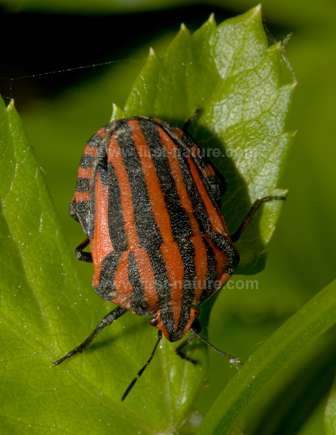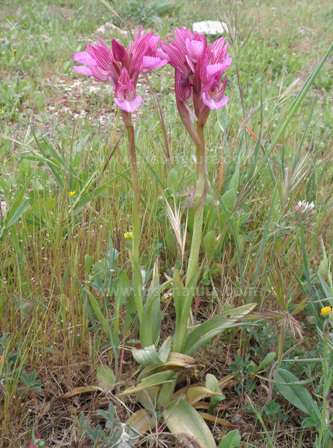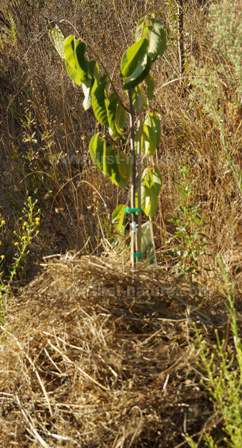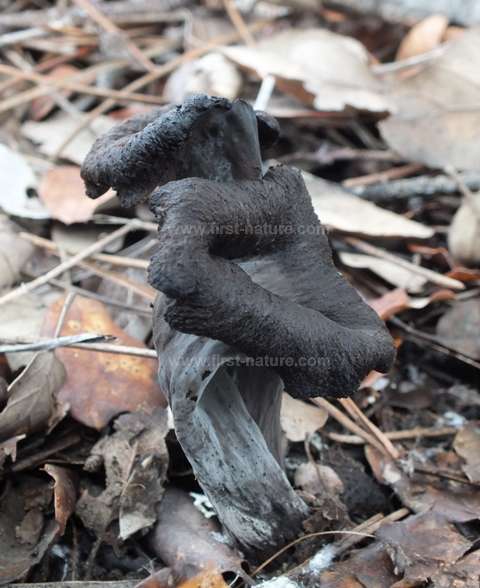Haliotis - Paradise Regained

Dawn breaks over the tranquil valley of Haliotis in southern Alentejo. Picture: Bernd Gerken
In February 2013 I began a series of articles for Algarve Resident entitled At One With Nature. The articles were about sustainable living, and the first in the series was inspired by Professor Bernd Gerken, an amazing man who lives just over the Algarve border in Alentejo. Berndt lives in a remote valley, and he has devoted much of the past ten years of his life to restoring his land there from the consequences of earlier unsustainable agricultural exploitation and mismanagement.
That initial article for Algarve Resident was largely about the man himself and his lifestyle. Limitations of space meant that writing in depth about Bernd's project to restore Haliotis (the name of his valley) was impossible. What follows below, therefore, is a description of the work that Bernd is carrying out on his land, the sustainable methods that he is using, and more importantly the effects that his work has had on the fertility and biodiversity of the area.
Paradise Lost
Damage to land is not always obvious. Most people's view of damage is of the type inflicted by Mother Nature - land 'destroyed' by wildfires, tornadoes, floods and other 'acts of God', as natural disasters are often called. Damage of the type inflicted by our own unsustainable lifestyles is often more subtle, but it is no less deadly for all that. Landscapes can look bewitchingly verdant and beautiful even when their ecological condition - the ability to support life - has been depleted to such an extent that they might better be described as green deserts. So much of our 'green and pleasant land' is artificially created by farming methods that favour particular plants grown as crops for either animals or mankind at the expense of our native plants upon which numerous animals and insects are dependent - and, in the case of pollinators, we ultimately depend on them too for our own survival.
Modern farming methods are very efficient at growing monoculture food crops covering vast areas, but they come at a terrible cost to our environment and ultimately, therefore, to us as well. It is quite clear that we must find and adopt more sustainable ways of feeding our burgeoning population - ways that do not denude the planet of its natural resources. Man may be contemplating exploratory journeys to Mars; but, as they say, there is no Planet B that will support Mankind any time soon... and Time is definitely not on our side.

Graphosoma italicum is one of the legion of brightly coloured bugs that live in the Algarve. Unsustainable land use destroys ecosystems upon which such creatures depend for their survival. Picture: Rob Petley-Jones
Nature has a way of fixing the damage that from time to time she inflicts on the planet, although she may not return it to the exact state that it was in before: different plants may become the dominant species in an area damaged by flood or fire and, as a consequence, the balance of the ecology may shift to favour colonisation by different animals and insects. This process of recovery following a natural disaster can be accomplished in a remarkably short time.
The kind of damage that had been inflicted on Haliotis was of a different kind and a greater magnitude. The valley still looked beautiful, but on closer inspection it was obvious that the land was as devoid of natural biodiversity as even the most barren and parched of deserts; it had therefore been abandoned by the perpetrators of the destruction, who saw it as as being 'dead'. Not only had the land become incapable of supporting cash crops of food but it could not even be used to grow trees such as the non-native eucalyptus which covers so much of southern Portugal.
Finding the Key
Far from being disheartened by the parlous state of the land that he had purchased, Bernd Gerken knew that it was possible to restore the land at Haliotis. He believed that one day Haliotis would again support those creatures that had long since moved on to places that could sustain them, and at the same time it would be possible to grow food for human consumption. More importantly, he believed these objectives could be achieved in a way that would enhance the quality of the soil rather than further damaging it.
Bernd decided to follow more or less in the footsteps of a Japanese farmer, Masanobu Fukuoka, who devised a method of farming which became known in English as 'Natural Farming' or the 'Fukuoka Method' of farming.
Fukuoka, who lived from 1913 to 2008, was born in Japan and trained as a microbiologist and agricultural scientist. A close brush with death from pneumonia as a young man lead him to re-evaluate his life. He became convinced that modern agricultural methods were not sustainable and that working with Nature rather than against her would provide a much more secure future both for the planet and for Mankind. He resigned from his job and, after a period of travel and deep reflection, returned to his native island of Shukoku where, on a small farm, he set about working to prove his theories.

The Pink Butterfly Orchid Orchis papilionaceae - one of the rare species making a return at Haliotis
Bernd Gerken, himself a renowned professor of ecology, is very familiar with the work of Fukuoka and has based his remediation strategy for Haliotis on those now well-proven methods of Natural Farming. Indeed, Haliotis has become a centre where people can go and learn about the principles and practice of the Fukuoka Method, gaining hands-on experience in sustainable horticulture by working and living on the land.
Opening the Door
The 1960s hippy ethos gave birth to some level of public awareness about the dangers of living beyond our means in ecological terms, although we knew nothing of climate change in those days and very little about the delicate balance of ecosystems. What was evident, however, was that feeding thirty percent of the planet's total grain crops to animals in order to provide meat for a very small but wealthy minority of the world's population could not work in the long term.
Protests against this and other aspects of big-profit corporate 'chemical farming' did little to engage mainstream public opinion, but gradually action started to replace protest, and an increasing number of people began to try to align farming more closely with nature. This work was the foundation of the 'organic' movement with which we are all familiar today.
Masanobu Fukuoka's The One-Straw Revolution, published in 1975 was a small book that spoke volumes about the futility of attempting to change the natural balance of the land in order to feed ourselves. As well as teaching us about how he grew citrus fruits and vegetables on his farm in Japan, Fukuoka also revealed how our cultural values, material expectations and diets were being manipulated by profit-hungry businesses, and how in the process we were becoming more and more detached from Nature - the real world.
Natural Farming principles assert that ploughing or tilling of the soil, either by humans or by machinery, is wasted effort. Similarly, the use of chemical fertilisers, compost and pesticides ultimately leads to soils becoming so depleted of natural resources that the ongoing production of food is impossible without further doses of the same treatment. Interestingly, Fukuoka also discovered that leaving his fruit trees unpruned did not lead to any lessening of yield. Hence, much of the labour implicit in conventional farming became unnecessary, a situation which gave rise to Natural Farming's alternative name of 'Do Nothing Farming'.

A thick layer of straw mulch surrounds a newly-planted sapling at Haliotis
In all the original experiments carried out on Fukuoka's farm in Japan, simple changes in the traditional methods of farming resulted in very little reduction in yield but a massive reduction in the impact on the land.
For instance, instead of sowing rice seed in the spring onto a carefully prepared bed and then saturating it in a mixture of water and manure, the seed was sown directly onto a flooded river plain during the monsoon season in June and July, which is the time when rice seed would naturally fall to the ground. Simultaneously, seeds of white clover and barley or rye were sown and the whole area covered with a thick layer of rice straw from the previous harvest. The barley or rye and white clover germinate first, while the rice seed waits until spring.
Depending on which crop is being produced, the white clover is either supressed by covering it with mulch or encouraged to grow once the main food crop is established. In this way other potentially more damaging and invasive weeds are kept at bay. At no time are any chemicals added to the soil, although water is conserved and applied if necessary. The straw and white clover 'mulch' eventually breaks down and enriches the soil.
Although traditional Japanese farming methods may not have damaged the soil, they did not enrich it either. In any case these traditions had been largely abandoned post World War II in favour of Western intensive farming methods which, while increasing crop yields in the short term, robbed the soil of all its nutrients in as little as a single season. Thus the dark cycle of chemical dependency became rooted in Japanese agriculture.
Managing without herbicides and pesticides allows the naturally-occuring plants to grow, and so despite the presence of food crops the ecosystems with their insect and animal life remain intact. One of the results of maintaining this ecological balance is that no individual insect species, for instance, can thrive at the expense of other creatures or plants. Predators ('pests' as we term them) of a particular crop are controlled as effectively by natural predation as they are by costly and continuous chemical interventions.
Haliotis
Although most visitors know the Algarve as a sunny holiday destination, the climate at Haliotis can be harsh in the extreme. Summer temperatures reach the high thirties, and yet frosts in winter are far from rare occurences. Nevertheless, the diversity and abundance of wildflowers, shrubs and trees is breathtaking and anybody walking through the countryside there cannot fail to notice that when left in its natural state the land is undoubtedly fertile.
The abandoned land at Haliotis was far from natural. Although advocates of Natural Farming generally frown upon the use of machinery, previous land use (misuse?) had caused the sides of the valley to collapse, and so initially Bernd used mechanical diggers to restore terracing along the valley slopes. Since then all the work to restore the land to a state in which it can support life has been done without machines and without using agricultural chemicals to promote growth or suppress weeds. At this stage I think it is important to dispel any notion that Natural Farming is easy or that not weeding and not shifting huge quantities of compost does away with the physical work normally attributed to growing food - it does not. The big difference is that food is grown in such a way that it enhances the nutrient levels in the soil rather than depleting them. Working closely with Nature does away with unnecessary work at inappropriate times of the year.

Horn of Plenty Craterellus cornucopioides growing at Haliotis. Despite having a French common name that translates to Trumpet of Death, this is one of the Algarve's most sought after edible fungi
When walking around the land at Haliotis it comes as quite a surprise to see broccolli, cabbages and other vegetables thriving among the natural vegetation beside paths or on slopes rather than in carefully prepared, weed-free cultivation beds. The new terraces are populated with fruit trees; but, other than clearing a small area before planting them, no other preparation is required. The secret, according to Bernd, is in mulching. Once the tiny trees are planted, the area immediately around them is covered in a thick layer of straw. This simple technique helps to prevent the agressive growth of other plants that would crowd-out the saplings before they can get going; it also retains moisture, which is essential in the hot dry summers, and protects the young plants against frosts in wintertime.
To those of us who love wildlife and deplore the wholesale destruction of species across the vast green deserts created by modern monoculture farming methods, Haliotis is truly impressive in its biodiversity. In the ten years that Bernd Gerken has worked on his remediation project he has seen a marked improvement in the biodiversity of the site. Plants, insects and other animals have either returned to the area or they have increased in numbers.
Rare plants have colonised the valley and, in the instance of the Pink Butterfly Orchid Orchis papilionaceae, Haliotis is only the second recording for the species so far south in Portugal.
Food production is impressive, too. Those who go to stay and work at Haliotis are almost entirely supported by a mixture of wild and cultivated food grown on the site.
Fungal species are proliferating too, with some of the most prized edible mushrooms appearing in good numbers along with several other rare and probably inedible fungi. The kind of farming employed at Haliotis actively contributes to the environment - it is more than carbon neutral, and as a result the environment enjoys a net gain.
Above all Haliotis offers hope for the future of Mankind on this planet. Of course we must feed people - or stop having so many of them - but we cannot continue to produce food at the expense of the environment which is as vital to our health and wellbeing as it is to the many other creatures which have lived on earth much longer than we have. The Haliotis project shows that, although it's not easy, there is a sustainable alternative.
Please Help Us: If you have found this information interesting and useful, please consider helping to keep First Nature online by making a small donation towards the web hosting and internet costs.
Any donations over and above the essential running costs will help support the conservation work of Plantlife, the Rivers Trust and charitable botanic gardens - as do author royalties and publisher proceeds from books by Pat and Sue.

